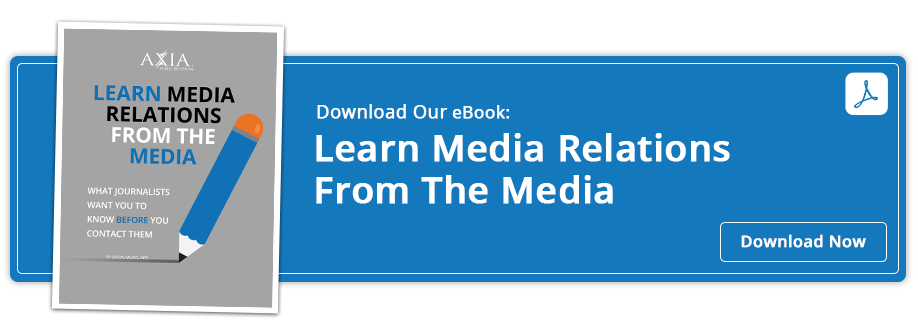
Let PR show you how to do it right
As discussed in our previous blog post, journalists receive between 25 and 100 pitches for every one article they write. Media coverage and media relations are highly competitive ventures – and they’re also highly valuable.
Making the field even more cutthroat is the fact that the number of traditional magazines and other publications is shrinking. Therefore, it’s important to be extra adept when making pitches. Use the best and most appropriate PR tools and techniques to make your news or message more desirable and increase your chances for positive media coverage.
-
Studies have shown that earned media (news stories, consumer reviews) is infinitely more effective than paid media (advertising). Customers trust it more, so it’s like having independent verification for your message.
-
Every news mention and interview enhances your name recognition.
-
The more times your company or spokesperson is quoted, the better positioned you are as a thought-leader in your field, making it more likely that, when reaching the decision level of the sales cycle, the customer will choose your product.
How to get more news exposure
Approximately 40 percent of journalists admit that they only rarely write articles based on pitches. Nevertheless, the glass is half full because the other 60 percent sometimes or often write stories that are built around information received from PR firms and their clients. It also means that the playing field has almost been cut in half and pitches must be just right in order to rise above the rest and be successful. These tips will help:
Research the publication. Ensure that your news is something it would be interested in and inclined to cover. It’s not enough to simply read the guidelines listed for press release submissions. You must take the extra step of learning about the publication’s style and preferences. If not, you’re wasting your time and the editors’.
Know the deadlines. Remember that every publication is different, with various schedules and lead times on pitches. For example, one magazine may think it’s fine to receive information two weeks before an event, while another needs a month. To be safe, you should plan on pitching at least three months in advance. Breaking news requires fast action to stay ahead of the curve. You should also consult the publication’s editorial calendar if available – that’s typically planned for up to a year in advance. If you neglect this rule, you run the risk of having a great pitch thrown into the trash because it’s just too late.
Find the correct journalist. According to a survey of 500 journalists, one of their biggest pet peeves was getting the wrong pitches. This occurs when you pitch topics they’re not interested in, when you don’t realize that the journalist’s beat or title has changed or you send your idea to someone no longer working for the publication. Simply put, do your homework. If you don’t, you appear lazy and unprofessional.
Have a plan. Your work doesn’t stop just because you’ve successfully pitched a story idea. Getting your company into the right publications is great because you can then repurpose the article in other publicity materials and on your website. If you aren’t doing this, you’re wasting a great opportunity.
Hire the right PR agency to handle this for you. At Axia, we will show you how to implement pitching into your overall strategic planning and content management to increase consumer awareness and your company’s profitability. Download our e-book Learn Media Relations from the Media or contact us today to learn how we can improve your media coverage to attract more customers.
Lisa Goldsberry is a writer for Axia Public Relations with more than 15 years of public relations experience. She specializes in business, higher education and technology PR. Connect with Axia Public Relations on Twitter at @axiapr.
Topics: public relations, media, inbound marketing



Comment on This Article